
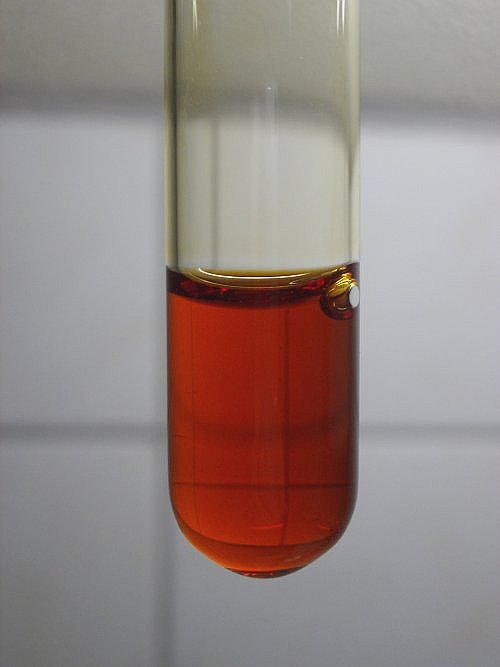

Aqueous solutions and precipitates of ruthenium
Ruthenium has a rich aqueous redox chemistry, which, however, is made somewhat obscure by all kinds of complexes, formed by the metal, especially in the lower oxidation states. Simple aqua ions of ruthenium only exist in the +2 and +3 oxidation states. Oxidation state +2 only can be kept for a short time. Within a few minutes, water is reduced by this and ruthenium goes to its +3 oxidation state. Ruthenium also can be in oxidation states +4, +6, +7 and +8, all in solution. In oxidation state +6 it only is stable in alkaline solution. In oxidation states +7 and +8 it only is stable in neutral and acidic solutions. Oxidation state +4 can be in solution, but only as a complex, and in alkaline solution, it exists as the insoluble dioxide.
![]()
Oxidation state +2
In this oxidation state, ruthenium only can be kept for minutes. Even when air is excluded, its aqueous solution is not stable. Ruthenium in its +2 oxidation state reduces water within minutes.
The color of a solution of a ruthenium (II) salt is very nice. It is a beautiful lavender color when strongly diluted. The color is caused by the color of ions Ru2+(aq).
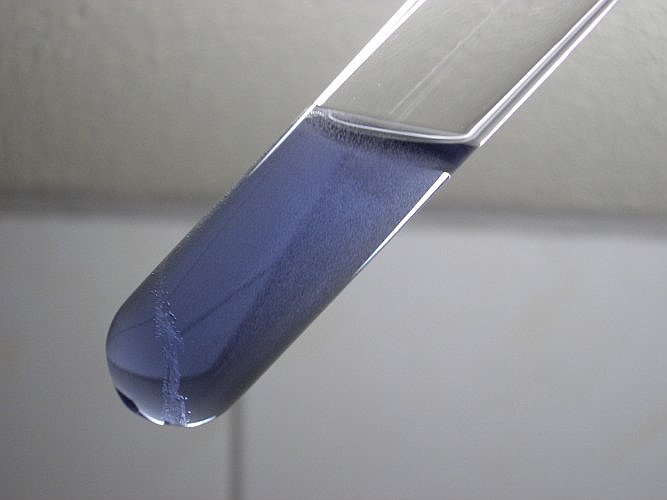
The picture shows the nice lavender solution, with some zinc at the bottom, which gives small bubbles of hydrogen. As soon as this piece of zinc is dissolved, the liquid looses its color and just a few minutes later, it has turned to the yellow/orange ruthenium (III).
A more concentrated solution of this ruthenium(II) species in moderately concentrated hydrochloric acid is deep blue. Such solutions are very air-sensitive and are oxidized easily by air. The picture below shows a sample of a more concentrated solution which was allowed to stand in contact with air for an hour or so. The top layer contains ruthenium in a higher oxidation state, which is oxidized by air. After one day, all of the blue material was gone and the liquid was yellow/brown.
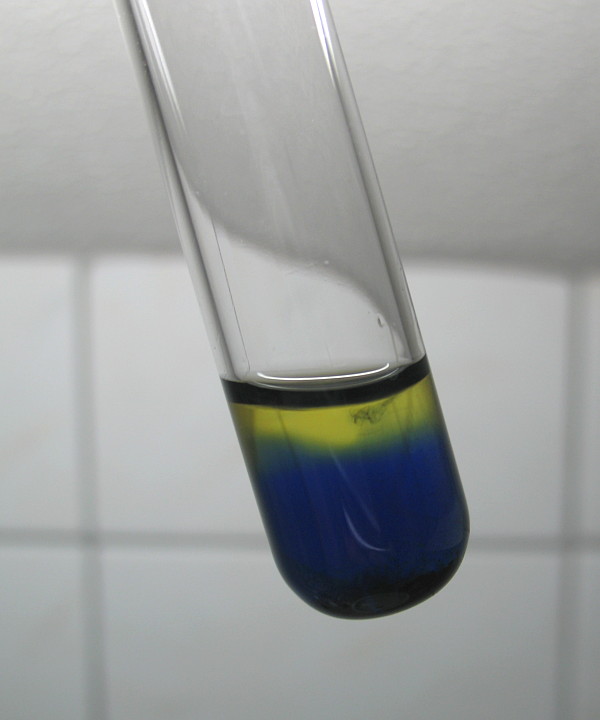
![]()
Oxidation state +3
The blue solution quickly turns soft yellow/orange/brown, when allowed to stand, even when no fresh air can enter the test tube. The blue/lavender Ru2+(aq) ions reduce the water and Ru3+(aq) is formed. The following picture shows the same solution as the one, shown above, but a few minutes after all zinc metal was dissolved. This is a strongly acidic solution, containing Ru3+(aq).
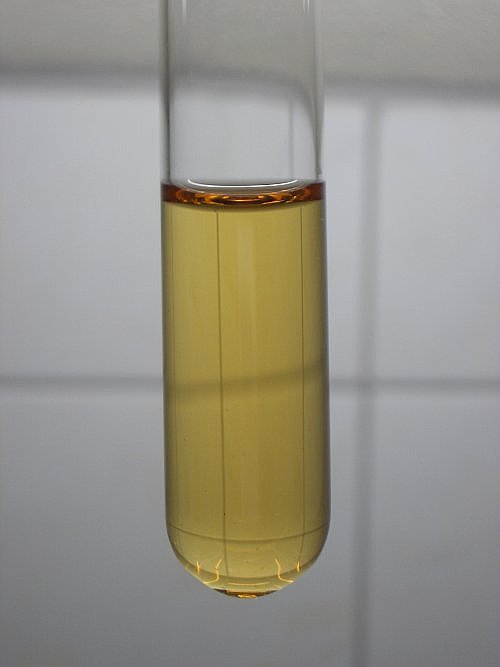
![]()
Oxidation state +4
The ruthenium in its +3 oxidation state also easily can be oxidized. When a carefully adjusted amount of an oxidizer is added (e.g. a persulfate) to a solution with Ru3+ in hydrochloric acid, then the liquid turns deep red/brown. This is the color of a chloro complex of ruthenium, RuCl62-. Ruthenium does not form simple aqua ions in the +4 oxidation state. When the red/brown acidic solution is neutralized with a slight excess of solution of NaOH, then an almost black (very dark blue) precipitate of hydrous RuO2 is formed.
The left picture shows the chloro complex of ruthenium (IV) and the right picture shows the precipitate of RuO2.
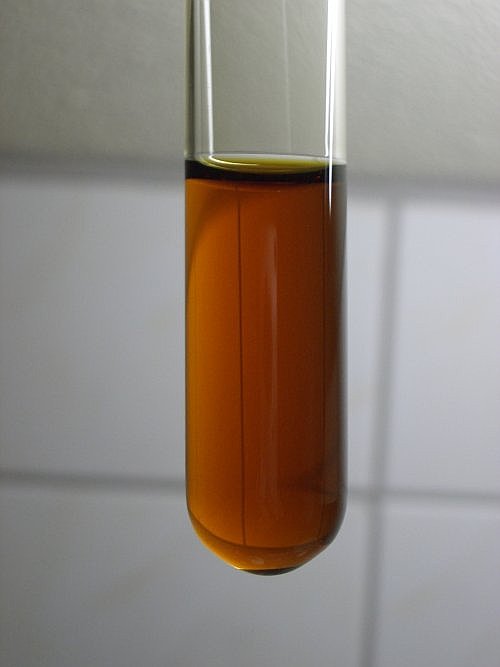
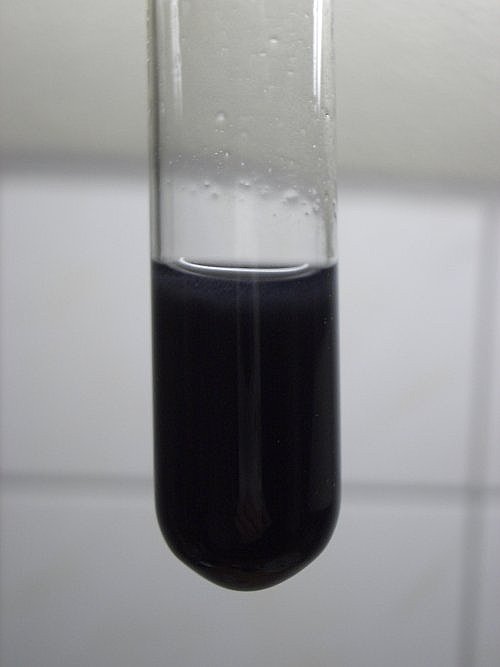
![]()
Oxidation state +6
 In
the +6 oxidation state, ruthenium only is stable in alkaline solution. On
acidification, the +6 oxidation state disproportionates to ruthenium in the +7
oxidation state and the +4 oxidation state. If the acid is hydrochloric acid,
then the +4 oxidation state is in the form of the red/brown complex, as shown
above, if the acid is another acid, then the +4 oxidation state is in the form
of RuO2.
In
the +6 oxidation state, ruthenium only is stable in alkaline solution. On
acidification, the +6 oxidation state disproportionates to ruthenium in the +7
oxidation state and the +4 oxidation state. If the acid is hydrochloric acid,
then the +4 oxidation state is in the form of the red/brown complex, as shown
above, if the acid is another acid, then the +4 oxidation state is in the form
of RuO2.
The picture at the left shows the bright red color of the ruthenium in the +6 oxidation state, in an alkaline solution. The ruthenium is present as the ruthenate ion, RuO42-. This color resembles the color of ruthenium in its +4 oxidation state in the form of the RuCl62- complex, but the color of the RuO42- ion is brighter.
The two pictures below show what happens when acid is added to the bright red solution, containing the red ruthenate. The ruthenate disproportionates to olive/green perruthenate, RuO4–, and either brown/red RuCl62- or black RuO2. When the acid, used for acidification is hydrochloric acid, then the red/brown complex ion RuCl62- is formed together with RuO4–. When a non-coordinating acid is used (e.g. sulphuric acid), then black RuO2 is precipitated and the solution becomes green, due to the RuO4– formed. The left picture shows the result of adding dilute hydrochloric acid. The color is the result of mixing the red/brown color of RuCl62- and the green color of RuO4–. The right picture shows the color of the solution of perrhenate ion, RuO4–, together with black particles of RuO2.
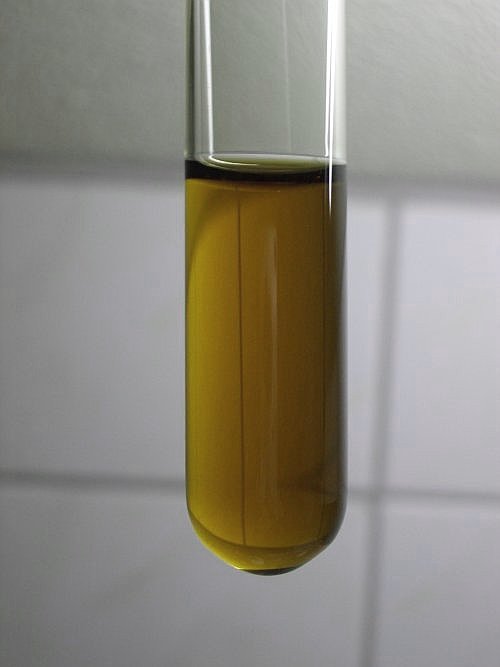
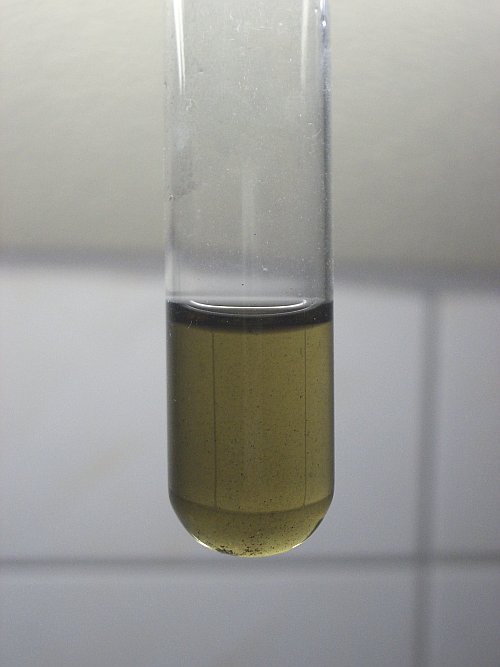
![]()
Oxidation state +7
Oxidation state +7 only is stable in acidic solutions and neutral solutions. Ruthenium in the +7 oxidation state is present as the dull olive/green perrhenate ion, RuO4–. The left picture shows a solution with this ion in acidic solution. The right picture shows what happens if the acid is neutralized with excess solution of NaOH. The ruthenium in the +7 oxidation state is not stable in this solution. It slowly produces oxygen and the color first intensifies to a deep brown (mix of deep red and olive/green) and finally it becomes red again. The right picture shows the color of a solution with RuO4–, to which an excess of a solution of NaOH is added, just a few seconds after adding the solution of NaOH. After a longer time of waiting, the liquid turns red again as shown in the section for oxidation state +6.
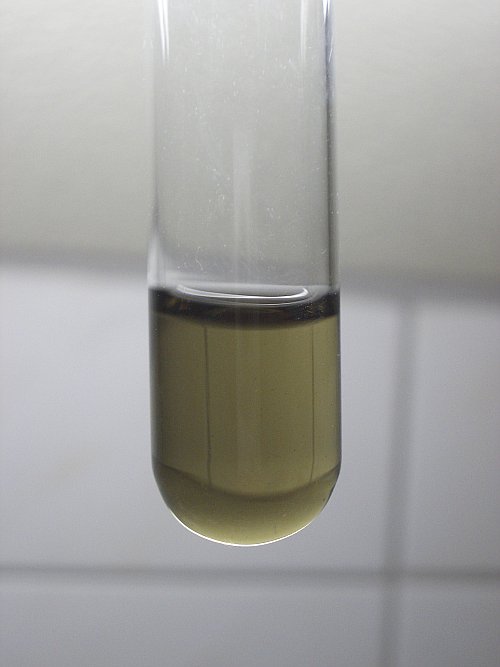

![]()
Oxidation state +8
Finally, ruthenium also exists in the +8 oxidation state, also in aqueous solution, as the volatile oxide RuO4. When the water is boiled, then vapor of RuO4 is going out of solution, together with water vapor. RuO4 is a strong oxidizer and it is capable of oxidizing hydrochloric acid to chlorine and water.
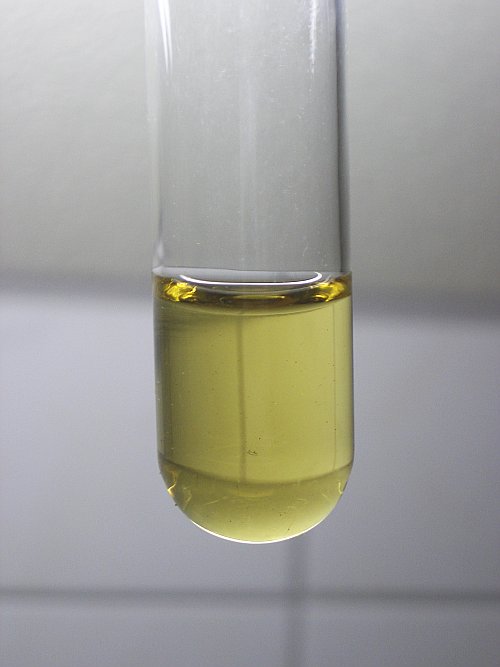
back to solutions/precipitates main page
back to miscellaneous main page